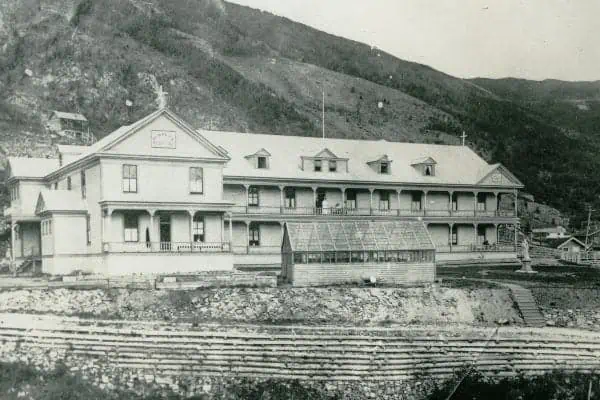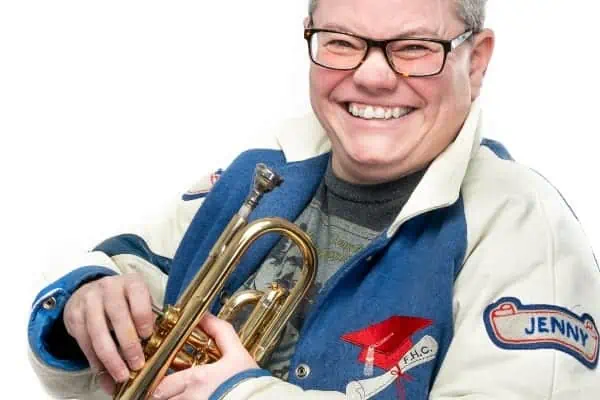“You’re in one of the slides in this presentation,” they told me. This came as a surprise, since it is generally my lot in life to be the picture taker rather than the picture takee. But there I was, standing outside the chain link fence on Fifth Avenue, in the fall of 2010, just about two years from when you are reading this.
At the time, I was seeking information about the recently discovered skeletal remains and coffins that had been exposed by the machines digging out the foundation for Dawson’s new wastewater treatment plant. It was chilly that day, and would get progressively chillier over the next several weeks as one, two, three and finally, four coffins were discovered in the former Northwest Mounted Police compound, which had later become the YTG Dept. of Highways Yard, and was then in the process of changing functions once again.
On this later occasion, however, I was in the viewing room at the Danoja Zho Cultural Centre, settling in to hear the latest iteration of “Gold Rush Graves Uncovered in Dawson City, Yukon”. The presenters were Susan Parsons, who works in the Tr’ondëk Hwëch’in’s Heritage Department as their Collections Manager, and Susan Moorhead Mooney, who now works at Yukon College, but was then working for the Carcross-Tagish First Nation.
The story of the Nantuck Brothers and how they suffered at the hands of Klondike justice has since become well known. During a recent staging of Leonard Linklater’s play, Justice, I was happy to see that just as much attention was paid to the way in which gold-seekers Meehan and Fox were mistreated by aboriginal justice. One died; the other was wounded.
You can read a short form of the story at the MacBride Museum’s website or delve into more detail in chapter two of Ken Coates and William Morrison’s book, Strange Things Done.
Alane Grove provided an analysis of the case in an article called “Where is the Justice, Mr. Mills?”, which can be found online in a volume called Essays in the History of Canadian Law: British Columbia and the Yukon, edited by Hamar Foster and John McLaren.
Leonard’s play is based on the material found in sources like these, but necessarily it’s not a totally accurate portrayal. However, while condensed in both time and number of actors, it is a faithful rendition of the issues involved.
The archeological and forensic work done at the actual burial site makes it clear that native and non-native felons received the same treatment after they were executed. Burials in hallowed ground would have been out of the question for convicted killers in those days, and keeping the sites a secret was considered proper to avoid disturbances. No one was hiding anything, as the executions themselves had been quite public.
The coffins had been squashed by additional landfill and decades of heavy machinery trundling over the compound. This had given rise to some misreporting (not by me, I hasten to add) that had two bodies packed in one coffin. Part of the fourth coffin and remains had been washed away, most likely by seasonal water flow in the slough which once flowed above ground through the compound before it was backfilled, and which still surfaces as a seasonal pond in between St.Paul’s Anglican Church and the Commissioner’s Residence.
Parsons and Mooney present an excellent illustrated lecture. Parsons focusses on the dealings at the site. Mooney shows how the physical remains tell the story of who these men were. The Nantuck brothers and one of the white felons are clearly identified. The fourth is not confirmed, but she makes a compelling case as to who he might be.
New to this version of the lecture was Parsons’ account of the eventual reburial of the four men, how it was decided that they would finally rest in Dawson City, and how that solemn, private event was handled.
This case is fascinating on many level; cross-cultural, archeological, and forensic. The manner in which all the potentially serious issues were dealt with in the 21st century is a sharp contrast to the misunderstandings that created the situation in the first place.




